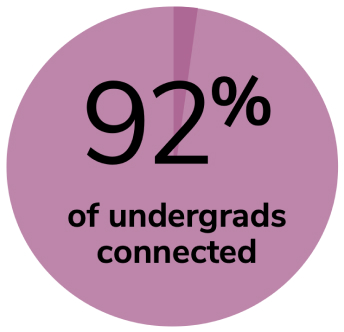Building a data-driven student experience
As the assessment director, Colascione was quick to confirm, “The numbers are everything.” She cites greater turnout, increased memberships within student organizations, improved attendance at programming events, and more efficient day-to-day administration for the staff. But it was the reporting capabilities allowing her team to learn from the data that were of paramount importance for her.
When it comes to events, programs, and everything else USC now manages through the platform, they are able to pull the data and examine who's getting involved, which learners are connecting on campus and which are not, and use that data strategically to make decisions for the future.
Colascione explained, “We always tell our events staff that students won't go where they don't want to go. Students don't want to be connected if it doesn't make sense to them.”
As a staff member, it's been really pivotal for me to see that and have evidence that students are connecting.
Megan Colascione, Assessment Director, Department of Student Life, University of South Carolina
The proof is in the growth
Every year since implementation, USC has seen a continuous increase in unique users in the Engage platform. “That shows us, too, that students have bought into this platform; they see the importance of it,” Colascione stated.
The Engage platform is specifically designed to be intuitive to learners. USC concurs, pointing out that it shows through their continually growing usage statistics and the unique involvement they’ve seen from many stakeholder groups across campus.
Colascione remarked, “Usage increases with our students, our faculty, and our staff. And we've seen immense growth with who wants to now jump into this platform. It’s become how we navigate the university.”

A catalyst for collaboration
While not initially the intent of the system implementation, using Engage has become an easy way for USC staff to communicate and collaborate across campus. “And it's all because our tools as different departments are all hubbed under the Anthology umbrella,” Colascione added.
She boasted about her team at USC, “We have a whole team of Anthology experts behind us to support the tool. It's been really neat to see how we navigate, and how we used to work in silos, and now how we’ve been able to come back together as an institution.”






